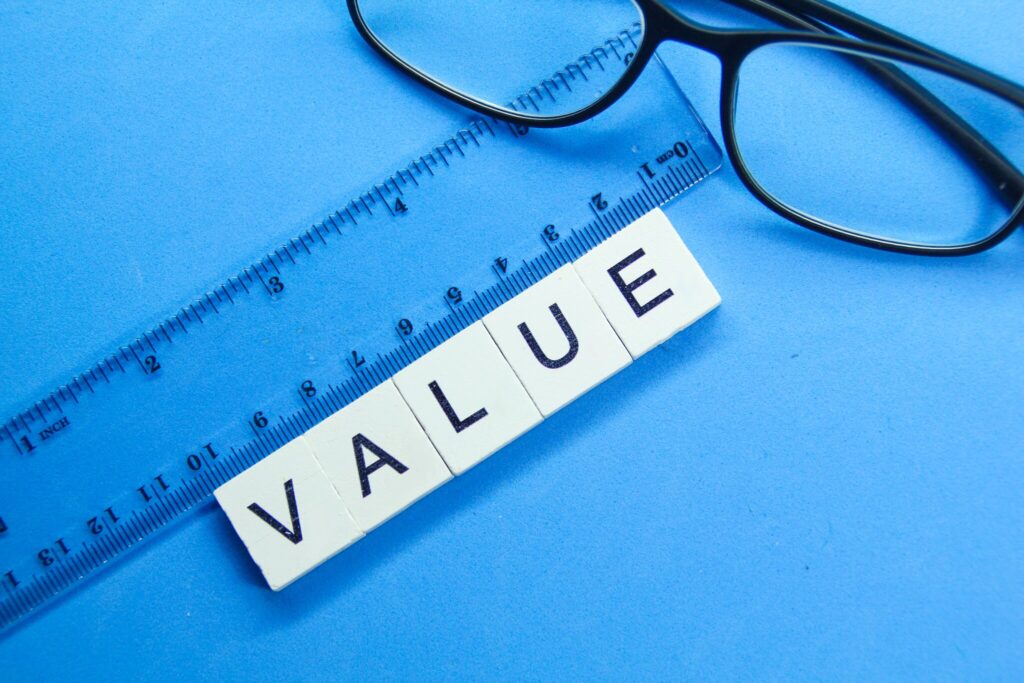
Large-scale B2B events are a product of the sustained efforts of many stakeholders in the event industry – the event planners, organizers, marketers, attendees, speakers, and sponsors who transform the event from a 2D reality to a 3D reality. If the event organizers are the architects of events, then the sponsors are the key pillars. Their contribution makes the grandeur of the event possible. While it’s not a one-way street for sponsors who benefit tremendously from sponsoring a B2B event, even event planners and their clients breathe a sigh of relief only when they manage to get the desired funds for their event.
A common question of most amateur B2B event organizers is how to get sponsors for events and prove event ROI. Read on to find out.
Step 1: Identifying the Right Sponsors
The path to bagging your event sponsorship starts with you identifying the right sponsors for events. Before you figure out how to get sponsors, you have to ask these questions to align yourself with getting the right sponsors for events.
Have you defined your audience?
Every event has a specific target audience. For example, a medical conference will have doctors, pharmacists, and medical suppliers attending the event. This understanding of your target audience can direct you to the right set of potential sponsors, who in this case will be health insurance companies, medical equipment brands, and so on. The sponsors should be able to perceive their inherent gain on investing in your event. Understanding the nature of your audience can be a good starting point for identifying potential sponsors for your event.
What is the key value proposition of your event?
To understand how to get event sponsors, you have to prepare your event proposal for your potential event sponsor, you have to be clear about what exactly your event is going to offer to these sponsors who will be investing their resources in your event. The situation has to be conducive and a win-win for the smooth functioning of all event operations.

Every event can have a unique value proposition depending on the type of sponsorship. For example, a company that manufactures high-end automobile parts would want to sponsor an event that focuses on automobile technology. Similarly, an insurance company would be an ideal sponsor for a FinTech event that would cater to all kinds of financial professionals.
Here is a list of value propositions that are relevant to include in an event proposal:
Benefit | Why It Matters |
Direct Access to Target Audience | Sponsors connect with decision-makers and buyers actively seeking solutions. |
Brand Visibility & Credibility | Presence at a high-quality event boosts trust, thought leadership, and recognition. |
Lead Generation & Pipeline Growth | Capture high-intent leads through booths, sessions, and networking. |
Product Demonstration Opportunities | Showcase offerings in real time to a relevant, engaged audience. |
Content & Thought Leadership | Host keynotes or panels to align the brand with industry innovation. |
Data & Analytics | Post-event data (e.g., footfall, interactions, lead scans) validates performance. |
Exclusive Access | VIP networking, closed-door roundtables, or 1:1 meetings with top-tier prospects. |
Influence Buying Cycles | Events often attract attendees in an active research or purchase mode. |
Can the potential sponsor align with your goals for the event?
You can go about this methodically by following the template below:
Dimension | Questions to Ask | What to Look For |
Target Audience Fit | – Does the sponsor want to reach the same audience as the event?- Are there buyers among your attendees? | Overlap in buyer personas, industries, and job titles |
Brand & Message Synergy | – Does their messaging align with your event’s theme?- Will their presence enhance the experience? | Complementary positioning—not a mismatch or dilution of focus |
Engagement Objectives | – Are they looking for lead gen, awareness, product demos, or thought leadership?- Do those match your formats? | Shared KPIs: booth traffic, session attendance, scan rate, etc. |
Budget & Activation Readiness | – Can they invest at the level your sponsorship tiers require?- Do they have the capacity to activate (booth, speakers)? | Prepared to deliver a compelling presence |
Past Event Behavior | – Have they sponsored similar events?- Were they active partners or passive logos on a banner? | Track record of valuable contributions and engagement |
Long-Term Potential | – Is this a one-off or could it lead to recurring sponsorship? | Strategic partner vs. transactional sponsor |
Step 2: Identify Sponsor Objectives
After selecting the right set of sponsors to target for your event, the next step is to identify the objectives of those sponsors. What are their expectations and goals that they plan to achieve by sponsoring your event? This information will help you in creating your sponsorship proposal. To learn more about a sponsorship proposal, read our blog, A Step-By-Step Guide to Writing an Event Sponsorship Proposal That Gets Results.

One way to understand the sponsor’s objectives is to research their current activities – their existing sponsorships, product launches, CSR initiatives, etc. You can even get your social listening professional to understand the overarching themes of the company’s communication towards their target audience. This will help you understand if they’re focusing on brand awareness, new product adoption, or thought leadership.
It could even be helpful to review their past event packages to understand their role in the events they sponsored, for example, if they participated in speaking slots to propagate thought leadership, or if they opted for large booths to showcase their products, or if they chose to do branding on lanyards and other giveaways to increase brand visibility. Digging into these questions will help you gauge your sponsor better and accordingly approach them with your proposal.
Step 3: Strategically Reach out to Potential Sponsors
Once you have identified the set of sponsors you wish to target, it’s time to reach out to them. To do this, you can,
Use LinkedIn
Start by searching for titles like “Head of Partnerships”, “Sponsorship Manager”, “Brand Marketing Manager”, and “Events or experiential marketing lead”. By this time, you would have a fair idea of the companies you are targeting, so you can do a filtered company-wise search as well to reach out to the right people.
Use Company Websites
Reach your desired sponsors through their company websites. Many companies have “Partner with us” or “Sponsorship” pages where there are contact details of the designated person from the company who handles sponsorships.
Use Event Sponsor Directories
Websites like SponsorMyEvent and SponsorUnited provide contact details of companies and their sponsorship managers. You can get in touch with the companies of your choice from these directories.
Step 4: Communicate the Value Proposition to them as Sponsors of Your Event
Once you know what your sponsors are looking for from the event, you can align your proposal in a way that showcases the benefits they gain from sponsoring your event. Here are a few tips to make sure you understand how to get sponsors for events and effectively communicate your value proposition to them.
Pro Tip 1: Focus on the sponsor and what they gain from associating with your event. For example, your brand will have the opportunity to engage 5,000 targeted decision-makers, accelerating your lead generation and thought leadership objectives.
Pro Tip 2: Address the core needs of your sponsor. For example, suppose your potential sponsor is a relatively new brand and is looking for visibility. In that case, you can communicate ways through which this sponsorship can give them increased brand awareness amongst their target audience. You can showcase the sponsor’s contribution to the event in the form of banners, speaking slots, and even pre-event gaming activities with the name of the sponsor in focus.
Other core needs include lead generation, thought leadership, and brand promotion. As event organizers, you will have to decide on which core needs to focus on and deliver your pitch accordingly.
Pro Tip 3: Communicate the kind of audience your event will be hosting. Most sponsors are interested in touching base with your event attendees. Their main aim is to buy access to your audience and not your event. Keeping this in mind, communicate the size of your audience, their seniority levels (Managers, CEOs, VPs), and the industries they belong to.
Pro Tip 4: Highlight the tangible deliverables you will be offering in your proposal and also during the pitch. For example, discuss the logo placement locations of the sponsor brand, the digital impressions for them that you can guarantee, the post-event reporting, and all branding touchpoints that you can deliver to your sponsor.
Pro Tip 5: Share past success stories with metrics. Social proof is always powerful, and you can use this to create a good impression about your event to your target sponsor. Statements like “ Last year, 80% of our sponsors renewed, or our sponsors saw an average 3X ROI” can be extremely impactful in cracking a deal with your sponsor.
Step 5: Prove Event ROI to Sponsors
Building long-term relationships with sponsors is every event marketer’s dream. However, to get there, you should be able to communicate your event ROI to sponsors strategically. We already covered how to showcase the value of your event. Now let’s take a look at what metrics and parameters you should focus on while having a meeting with your potential sponsors.
Some of the common goals of sponsors are lead generation, brand awareness, engagement, and thought leadership. As event organizers, you need to address these touchpoints and how you can help them achieve these goals. Discuss how your event attendees can be potential consumers for your sponsors’ products or services. Consider including relevant statistics of past events. For example, 72% of past attendees were decision-makers in cloud infrastructure from mid-to-large enterprises. Statements like these can help sponsors understand the value you bring to the table.
Showcase tangible ROI metrics of past sponsors. This could include footfalls of the event, booth visits, and the total number of MQLs delivered to the past sponsor. Other parameters for calculating ROI are cost per lead, speaking session views, overall social media reach, and CRM-matched leads. You can show projected ROI figures in your pitch deck based on these pointers.

Tools to Help You Track and Report Sponsorship ROI
There are a variety of tools one can use to track various parameters that can be used to prove event ROI. Here we have listed some of them on the basis of their functionality
- Lead Capture & Attribution: Tools like Brella, Swapcard, and Grip help to track booth visits, badge scans, and in-app interactions with sponsor content. Google Forms and HubSpot Forms capture contact information from sponsor-hosted sessions or CTAs.
- CRM Matchback & Lead Quality: Platforms like Salesforce, Zoho CRM, and HubSpot CRM can help identify what percentage of leads from the event matched a sponsor’s target audience or existing pipeline. On the other hand, tools like Clearbit and Apollo help enrich attendee data by showing job titles, company size, and geography.
- Brand Exposure & Engagement: Features like LinkedIn Campaign Manager and Meta Ads show impression volume, engagement rates, and CTR on sponsor-linked content or posts.
- Surveys & Testimonials: Tools like Google Surveys and Survey Monkey are used to gather attendee data pertaining to their event experience and interaction with different stakeholders, including the sponsors.
Strategies for Long-Term Sponsor Retention
Securing a sponsor is only the beginning, the real value lies in building long-term partnerships. Successful sponsor retention hinges on delivering consistent ROI, fostering trust, and aligning with evolving brand goals.
Deliver Measurable ROI
Post-event reporting is critical. Use real-time data tools to quantify leads delivered, CRM match rates, meetings scheduled, content engagement, and brand impressions. Sponsors are increasingly ROI-focused—transparent dashboards and custom impact reports tailored to their KPIs build credibility and justify renewals.
Co-create Experiences
Move from transactional sponsorship to strategic collaboration. Invite sponsors to co-design sessions, thought leadership activations, or audience engagement touchpoints. This ensures alignment with their objectives—whether it’s pipeline influence, brand awareness, or product showcase.
Year-Round Value
Don’t limit value to event days. Offer sponsors ongoing visibility through pre-event webinars, newsletters, post-event on-demand content, or branded surveys. Position your event as a platform, not a moment, where they can engage buyers continuously.
Tiered Loyalty Benefits
Introduce multi-year or loyalty-based pricing tiers, priority speaking slots, or data access perks for returning sponsors. This incentivizes repeat partnerships while increasing stickiness.
Account Management and Feedback Loops
Assign dedicated sponsor success managers to provide consistent communication and strategic support. After the event, conduct debriefs to capture feedback and evolve offerings. Sponsors stay when they feel heard, and their ROI improves year over year.
By moving beyond transactional sponsorships and acting as a long-term demand generation partner, event organizers can turn one-time sponsors into multi-year advocates.
Key Takeaway
Sponsorship success hinges on strategic alignment and measurable outcomes. B2B Event organizers must move beyond generic sponsorship packages and instead offer tailored opportunities that match a sponsor’s specific goals, whether it’s brand awareness, lead generation, or thought leadership.
To understand how to get sponsors for events, it’s essential to gauge your event audience in depth, job titles, industries, and buying intent, and present that data in a way that proves relevance. From there, you can design activation options that offer real value, such as branded speaking slots, access to decision-makers, or interactive booth experiences.
Lastly, sponsors expect proof of performance. Post-event reporting should not just summarize activity, but clearly show how the sponsorship contributed to pipeline, engagement, and brand visibility.


Comments are closed.